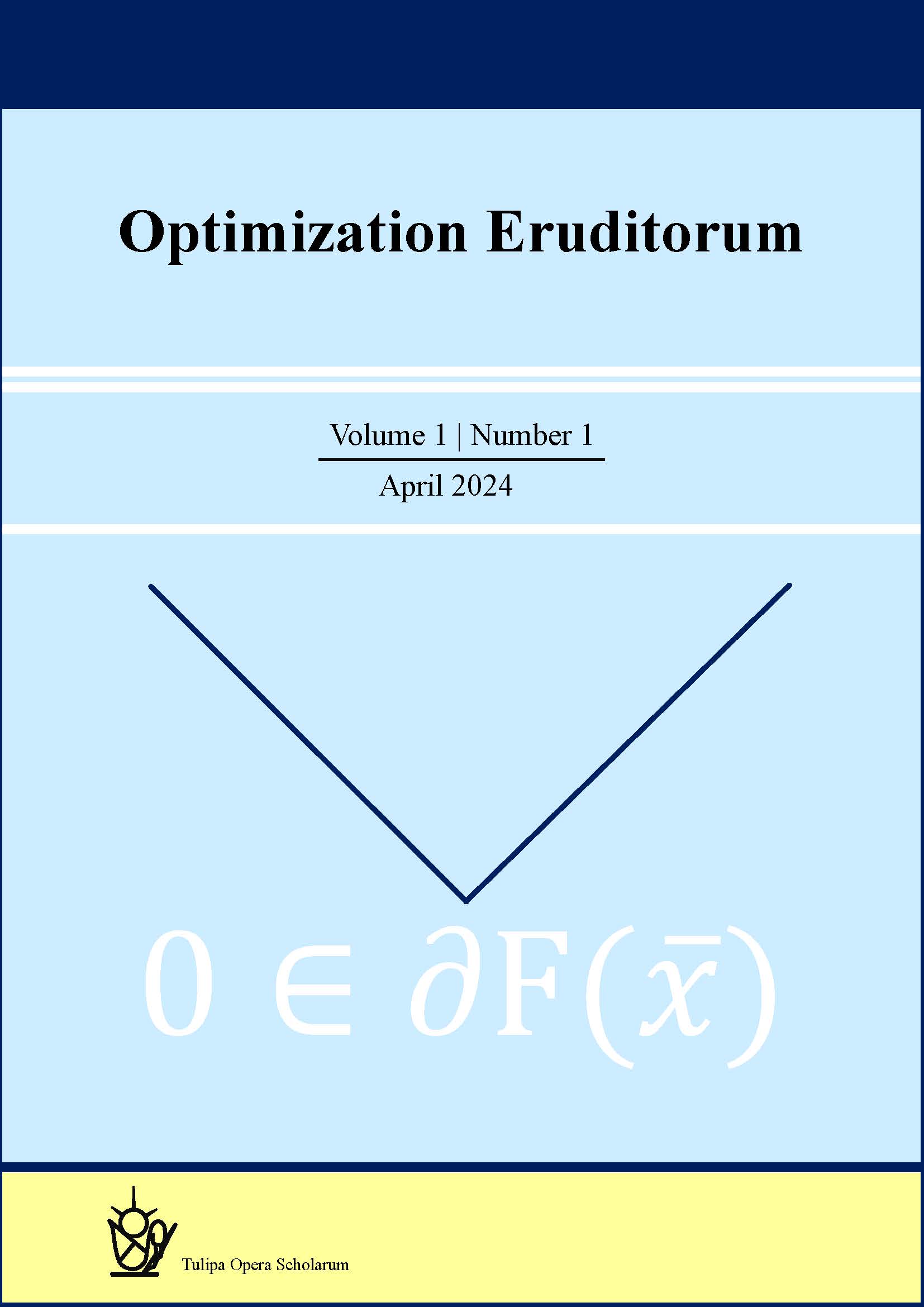Smoothed FMSG algorithm for solving dock-door assignment problem
Optimization Eruditorum, Volume 2, Issue 2, August 2025, Pages 85–96
TUGBA SARAC
Department of Industrial Engineering, Eskisehir Osmangazi University, Eskisehir, Turkey
FERISTAH OZCELIK
Department of Industrial Engineering, Eskisehir Osmangazi University, Eskisehir, Turkey
NERGIZ KASIMBEYLI
Department of Industrial Engineering, Eskisehir Technical University, Eskisehir, Turkey
REFAIL KASIMBEYLI
Department of Industrial Engineering, Eskisehir Technical University, Eskisehir, Turkey
UNEC Mathematical Modeling and Optimization Research Center, Azerbaijan State University of Economics, Baku, Azerbaijan
ABDUSSAMET SOKEL
Department of Industrial Engineering, Eskisehir Osmangazi University, Eskisehir, Turkey
Abstract
Cross-docking is a storage process in which products from different companies are combined in a warehouse according to their shipping locations and shipped within a short time. One of the main problems in cross-docking is the assignment of trucks to doors. For this reason, this problem is frequently addressed in the literature. However, in these studies, it is generally assumed that the number of workers assigned to the doors and the service mode of the doors are known. In this study, different from the literature, an integrated problem is addressed in which the trucks to be assigned to the doors, the service modes of the doors and the number of workers to be assigned to the doors are decided simultaneously. A mixed integer nonlinear programming (MINLP) model and a smoothed Feasible Value Based Modified Subgradient (FMSG) algorithm are developed to solve the integrated problem. F-MSG algorithm solves the sharp augmented Lagrangian dual problems, where zero duality gap property is guaranteed for a wide class of optimization problems without convexity assumption. F-MSG algorithm has no requirements on the type of a norm term used in the sharp augmented Lagrangian. In this paper, to formulate a dual problem, we use the sharp augmented Lagrangian with \(\ell_1\) norm term. We change the norm term so that the new formulation becomes smoothed and utilize the so-obtained version of the F-MSG algorithm. The performance of the smoothed version of F-MSG algorithm is demonstrated by using test instances taken from the literature. The obtained results demonstrate the strength of the applied modification on the mathematical model.
Cite this Article as
Tugba Sarac, Feristah Ozcelik, Nergiz Kasimbeyli, Refail Kasimbeyli, and Abdussamet Sokel, Smoothed FMSG algorithm for solving dock-door assignment problem, Optimization Eruditorum, 2(2), 85–96, 2025

